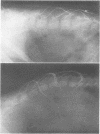Abstract
An implant has been designed which, in the baboon, will empty the bladder almost completely, or close the urethra so that urine does not leak out despite a contraction of the detrusor muscle. Electrodes on the 1st and 2nd sacral anterior nerve roots (corresponding roughly to the 3rd and 4th sacral in man) suffice for both actions. Closing the urethra or emptying the bladder artificially in this way seems to cause conscious, neurologically intact, baboons no discomfort. Implants have remained in place for over two years, and have emptied the bladder artificially 12 times a day for many weeks, without deterioration of function.
Full text
PDF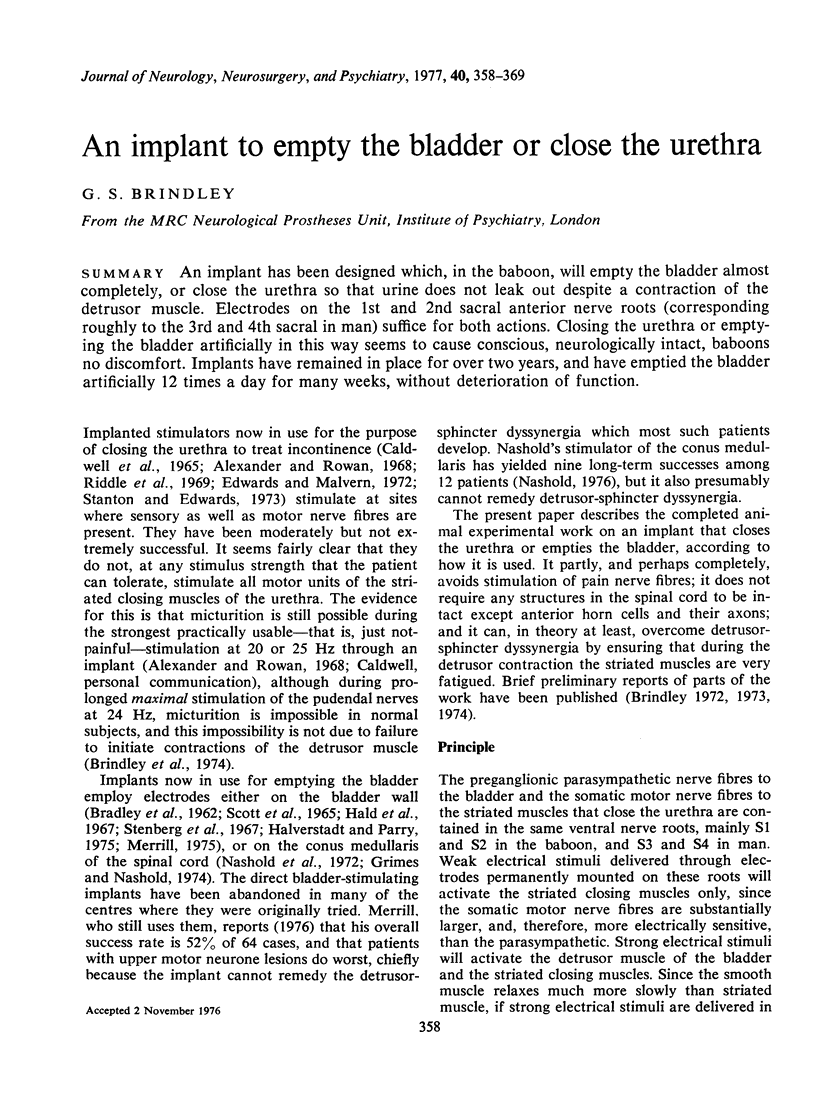
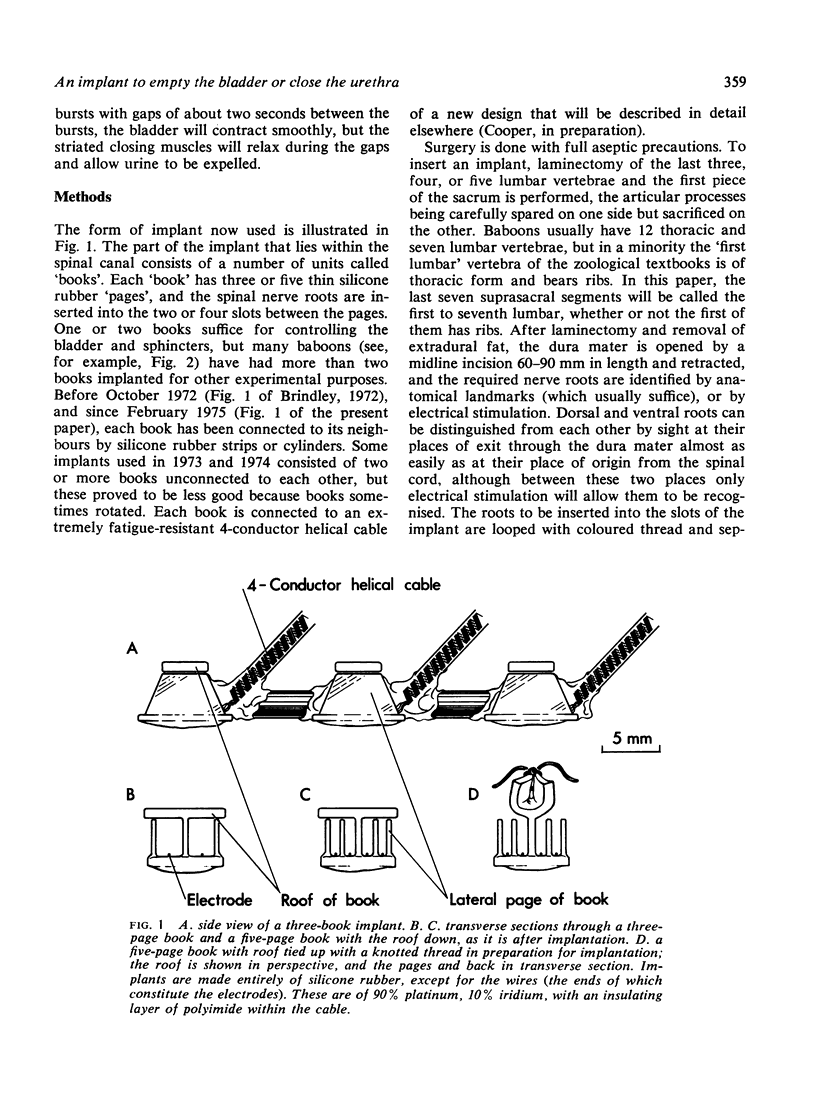

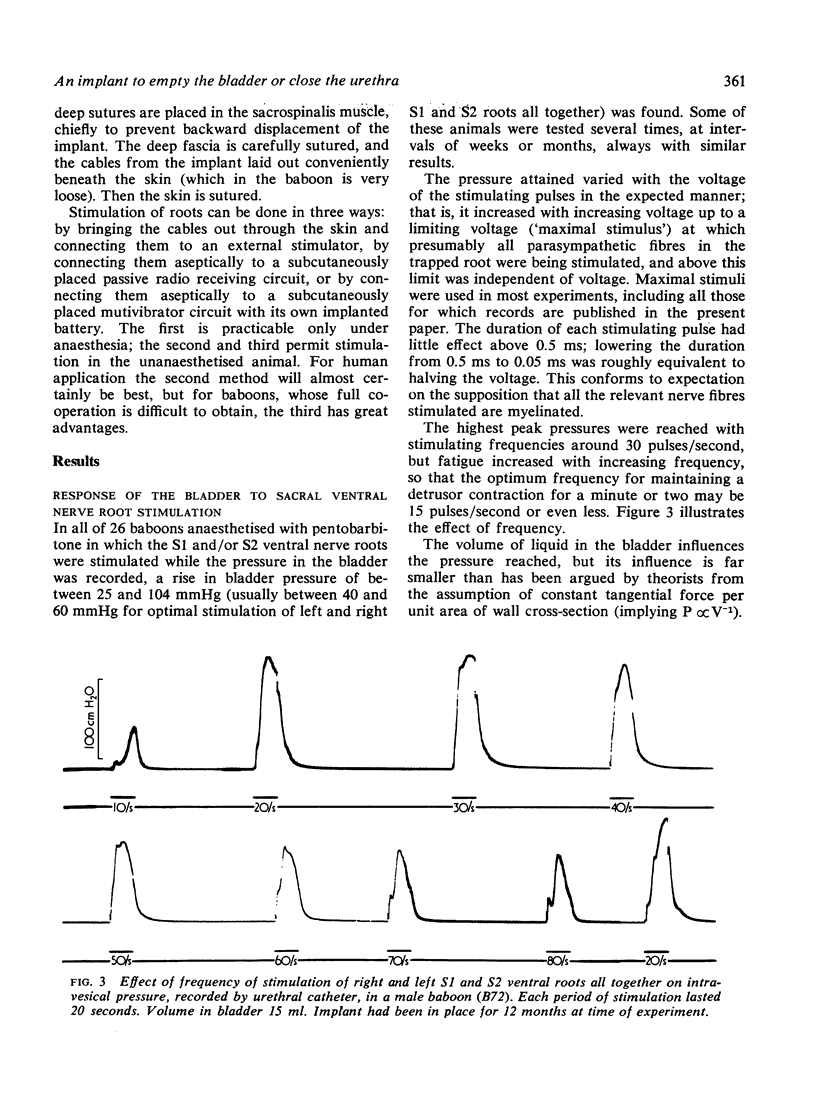
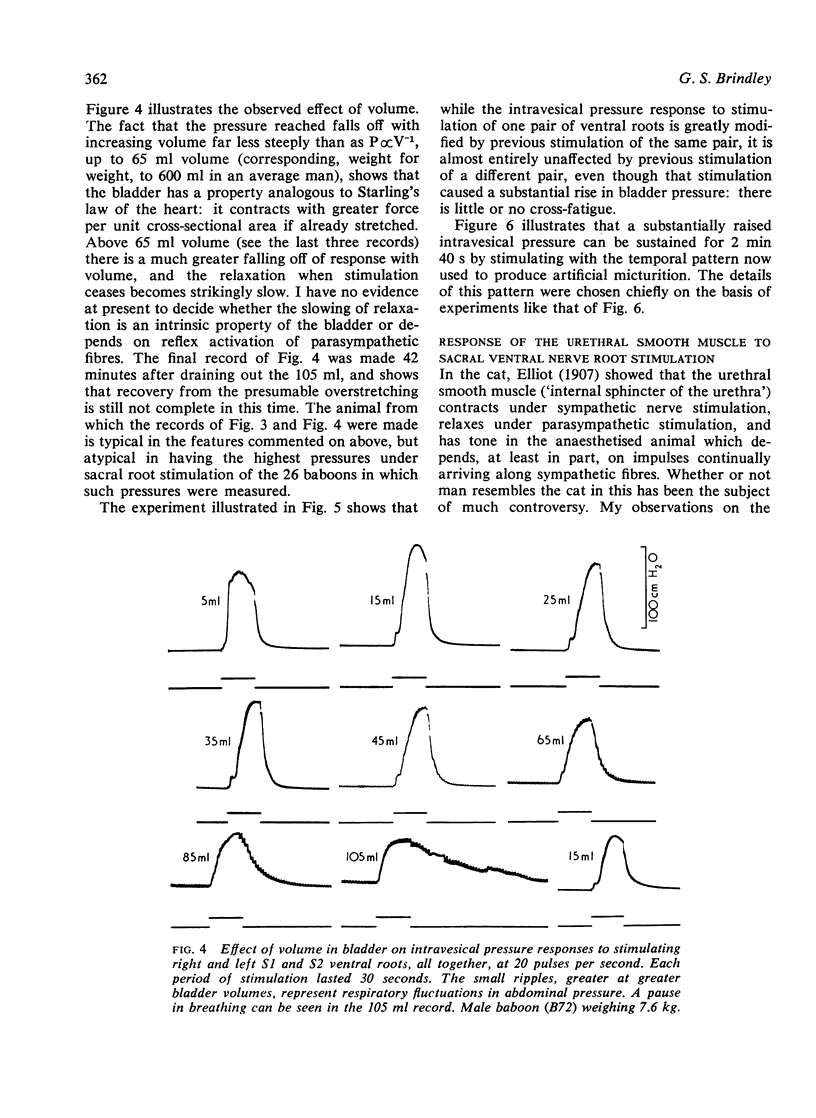
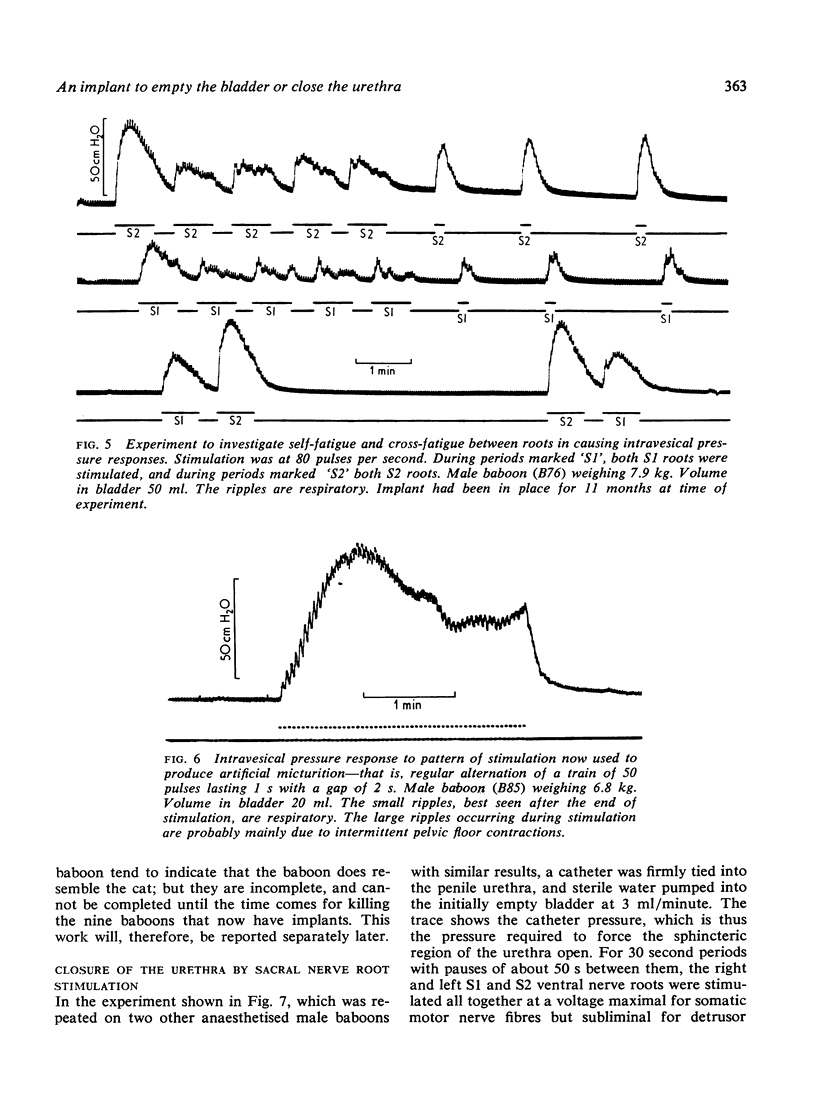
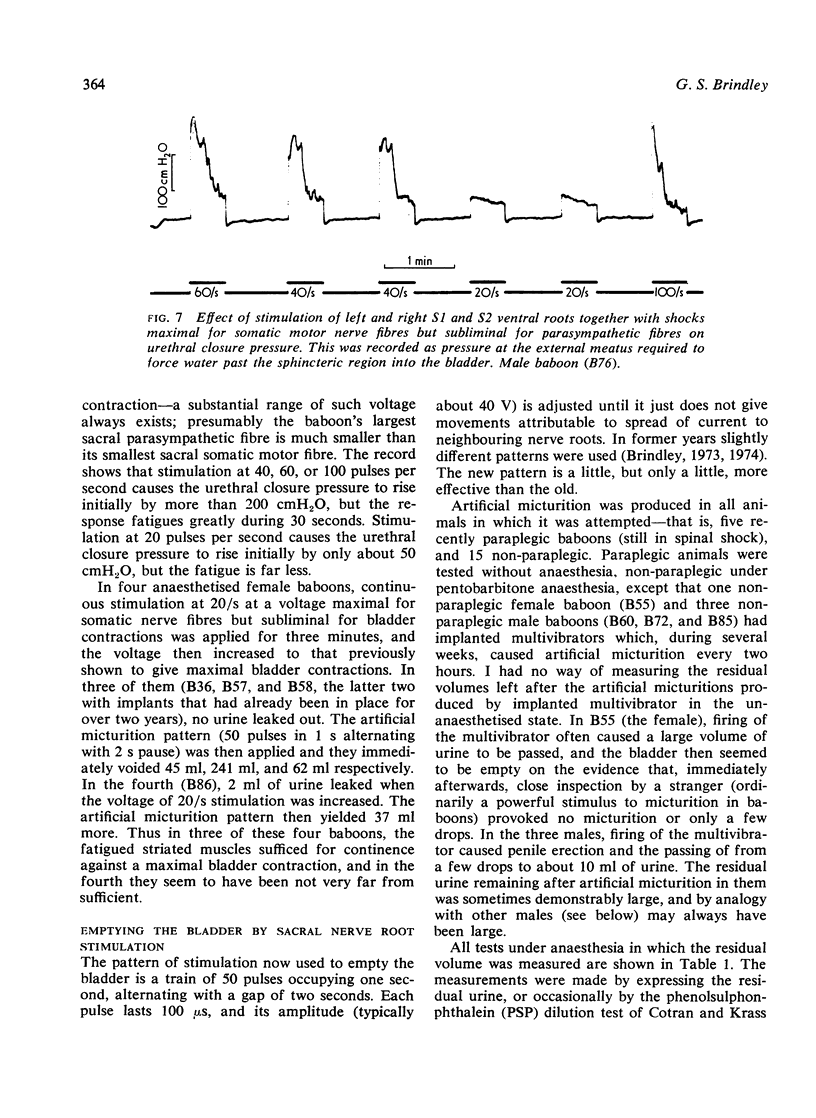
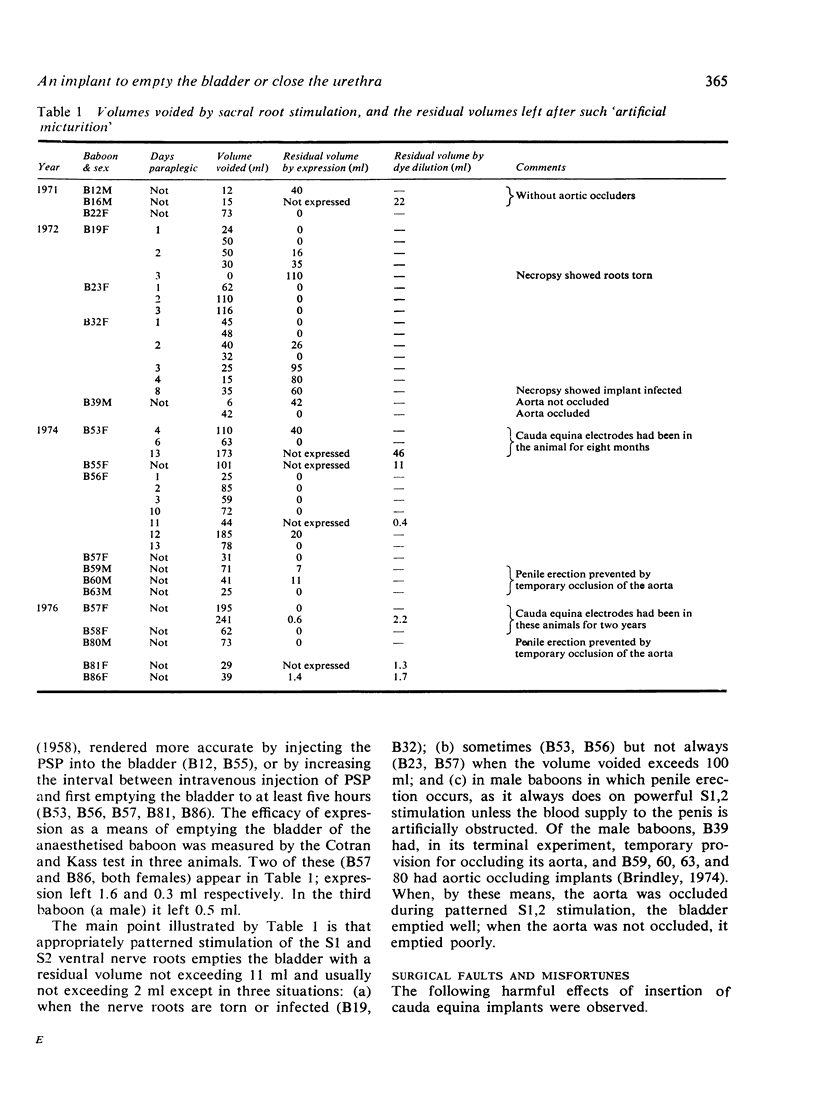
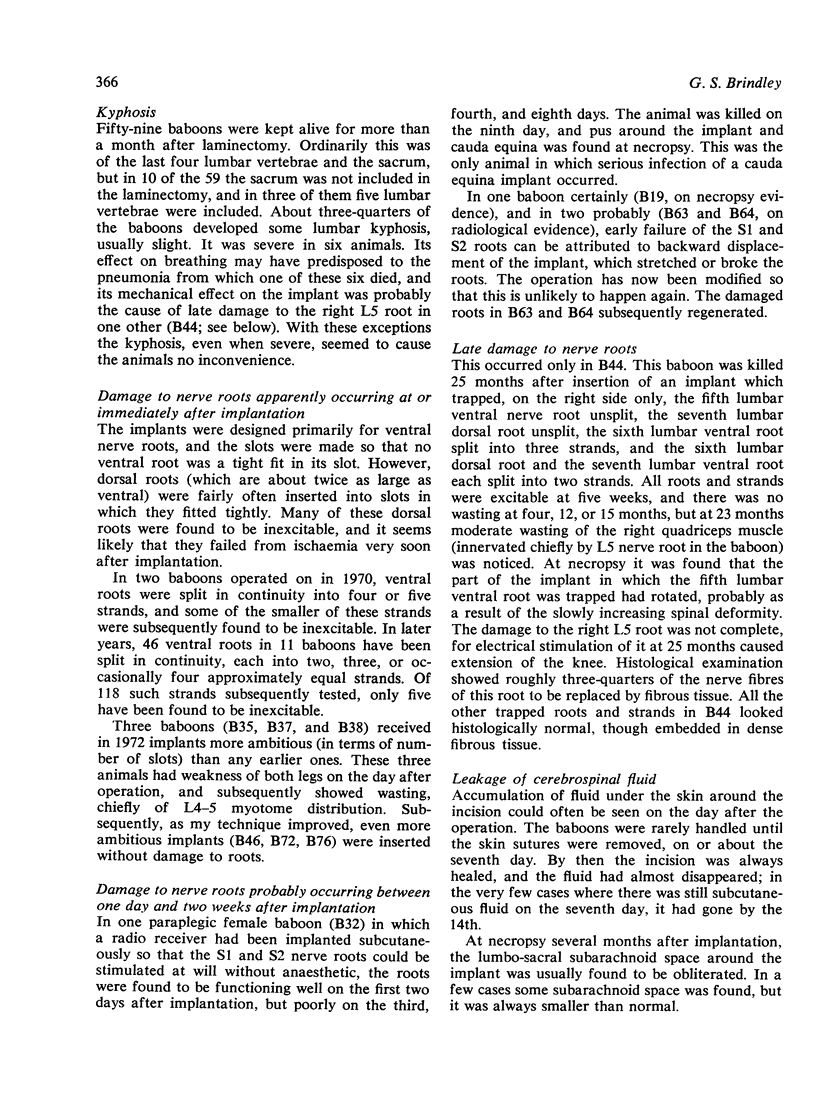
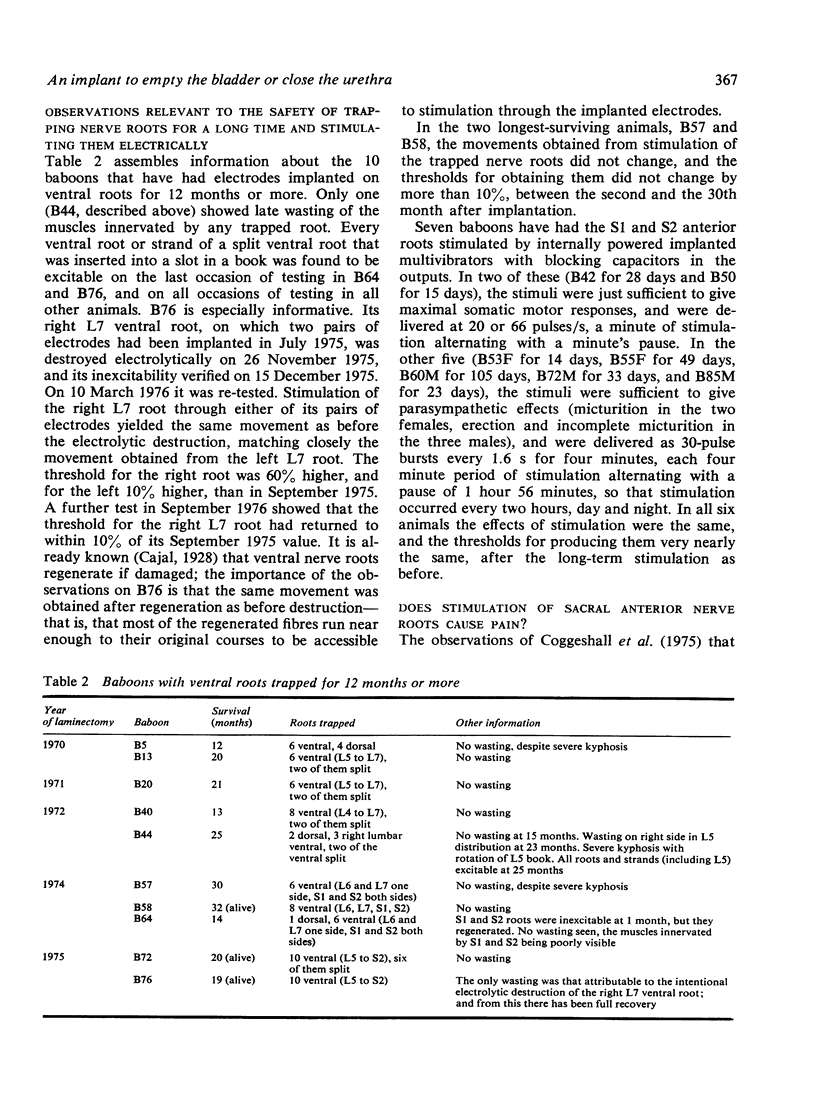
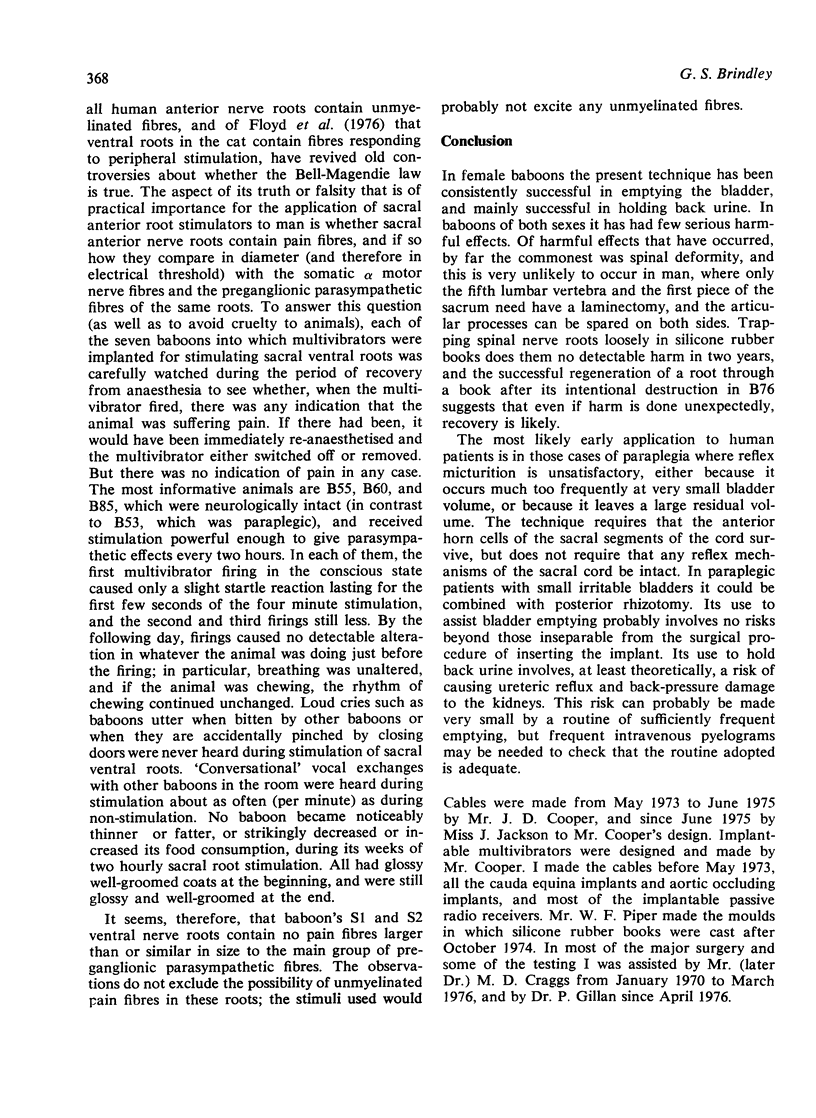
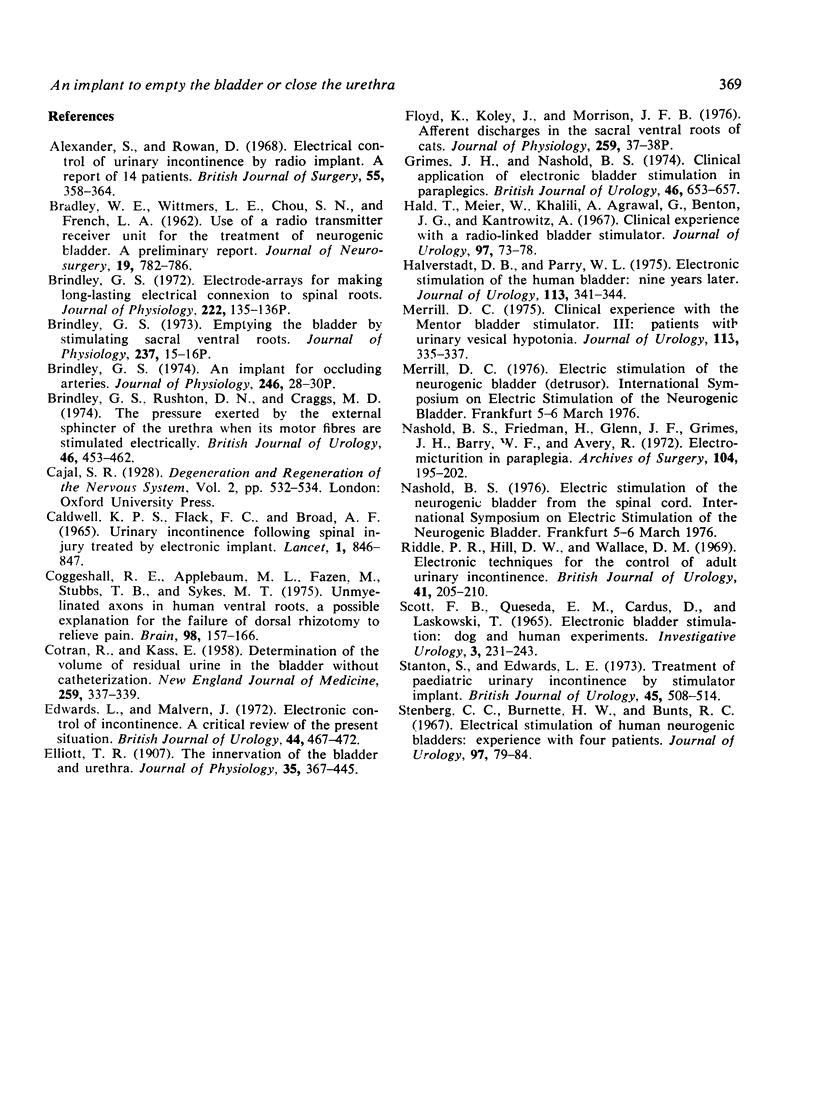
Images in this article
Selected References
These references are in PubMed. This may not be the complete list of references from this article.
- Alexander S., Rowan D. Electrical control of urinary incontinence by radio implant. A report of 14 patients. Br J Surg. 1968 May;55(5):358–364. doi: 10.1002/bjs.1800550508. [DOI] [PubMed] [Google Scholar]
- BRADLEY W. E., WITTMERS L. E., CHOU S. N., FRENCH L. A. Use of a radio transmitter receiver unit for the treatment of neurogenic bladder. A preliminary report. J Neurosurg. 1962 Sep;19:782–786. doi: 10.3171/jns.1962.19.9.0782. [DOI] [PubMed] [Google Scholar]
- Brindley G. S. Electrode-arrays for making long-lasting electrical connexion to spinal roots. J Physiol. 1972 Apr;222(2):135P–136P. [PubMed] [Google Scholar]
- Brindley G. S., Rushton D. N., Craggs M. D. The pressure exerted by the external sphincter of the urethra when its motor nerve fibres are stimulated electrically. Br J Urol. 1974 Aug;46(4):453–462. doi: 10.1111/j.1464-410x.1974.tb10184.x. [DOI] [PubMed] [Google Scholar]
- CALDWELL K. P., FLACK F. C., BROAD A. F. URINARY INCONTINENCE FOLLOWING SPINAL INJURY TREATED BY ELECTRONIC IMPLANT. Lancet. 1965 Apr 17;1(7390):846–847. doi: 10.1016/s0140-6736(65)91379-6. [DOI] [PubMed] [Google Scholar]
- COTRAN R. S., KASS E. H. Determination of the volume of residual urine in the bladder without catheterization. N Engl J Med. 1958 Aug 14;259(7):337–339. doi: 10.1056/NEJM195808142590707. [DOI] [PubMed] [Google Scholar]
- Coggeshall R. E., Applebaum M. L., Fazen M., Stubbs T. B., 3rd, Sykes M. T. Unmyelinated axons in human ventral roots, a possible explanation for the failure of dorsal rhizotomy to relieve pain. Brain. 1975 Mar;98(1):157–166. doi: 10.1093/brain/98.1.157. [DOI] [PubMed] [Google Scholar]
- Edwards L., Malvern J. Electronic control of incontinence: a critical review of the present situation. Br J Urol. 1972 Aug;44(4):467–472. doi: 10.1111/j.1464-410x.1972.tb10107.x. [DOI] [PubMed] [Google Scholar]
- Elliott T. R. The innervation of the bladder and urethra. J Physiol. 1907 Jul 2;35(5-6):367–445. doi: 10.1113/jphysiol.1907.sp001198. [DOI] [PMC free article] [PubMed] [Google Scholar]
- Floyd K., Koley J., Morrison J. F. Proceedings: Afferent discharges in the sacral ventral roots of cats. J Physiol. 1976 Jul;259(1):37P–38P. [PubMed] [Google Scholar]
- Grimes J. H., Nashold B. S. Clinical application of electronic bladder stimulation in paraplegics. Br J Urol. 1974 Dec;46(6):653–657. doi: 10.1111/j.1464-410x.1974.tb08900.x. [DOI] [PubMed] [Google Scholar]
- Hald T., Meier W., Khalili A., Agrawal G., Benton J. G., Kantrowitz A. Clinical experience with a radio-linked bladder stimulator. J Urol. 1967 Jan;97(1):73–78. doi: 10.1016/S0022-5347(17)62982-3. [DOI] [PubMed] [Google Scholar]
- Halverstadt D. B., Parry W. L. Electronic stimulation of the human bladder: 9 years later. J Urol. 1975 Mar;113(3):341–344. doi: 10.1016/s0022-5347(17)59476-8. [DOI] [PubMed] [Google Scholar]
- Merrill D. C. Clinical experience with the Mentor bladder stimulator. III. Patients with urinary vesical hypotonia. J Urol. 1975 Mar;113(3):335–337. doi: 10.1016/s0022-5347(17)59474-4. [DOI] [PubMed] [Google Scholar]
- Nashold B. S., Jr, Friedman H., Glenn J. F., Grimes J. H., Barry W. F., Avery R. Electromicturition in paraplegia. Implantation of a spinal neuroprosthesis. Arch Surg. 1972 Feb;104(2):195–202. doi: 10.1001/archsurg.1972.04180020075015. [DOI] [PubMed] [Google Scholar]
- Riddle P. R., Hill D. W., Wallace D. M. Electronic techniques for the control of adult urinary incontinence. Br J Urol. 1969 Apr;41(2):205–210. doi: 10.1111/j.1464-410x.1969.tb09924.x. [DOI] [PubMed] [Google Scholar]
- Scott F. B., Quesada E. M., Cardus D., Laskowski T. Electronic bladder stimulation: dog and human experiments. Invest Urol. 1965 Nov;3(3):231–243. [PubMed] [Google Scholar]
- Stanton S. L., Edwards L. Treatment of paediatric urinary incontinence by stimulator implant. Br J Urol. 1973 Oct;45(5):508–514. doi: 10.1111/j.1464-410x.1973.tb06813.x. [DOI] [PubMed] [Google Scholar]
- Stenberg C. C., Burnette H. W., Bunts R. C. Electrical stimulation of human neurogenic bladders: experience with 4 patients. J Urol. 1967 Jan;97(1):79–84. doi: 10.1016/S0022-5347(17)62983-5. [DOI] [PubMed] [Google Scholar]



